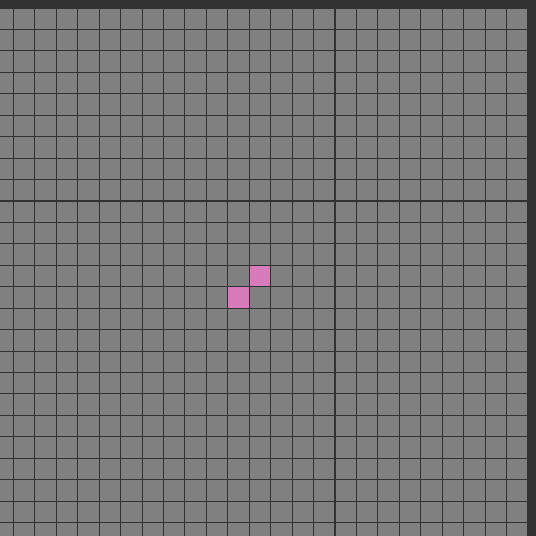Programmer, Technical Artist, Generative Artist
Dissertation:
"Gummy Paradise: Cellular Automata as a dynamic game difficulty system"
(C#, Unity, Cellular Automata)
About:



Platform: Android, (Windows secondary)
Engine: Unity
Language: C#
Roles: Programmer, Designer
Key Technology: Cellular Automata (CA)
Grade: TBA (Honours)
Features: A dynamic difficulty system using Cellular Automata, applied to the previously existing game Gummy Paradise for a game jam.
Cellular Automata: Cellular Automata is an interesting form of discrete computation where a dimensional space is formed of set unites or grid cells. Each cell can be in one of a set of states, and through the use of different rules it updates from generation to generation. Typically creating emergent complexity.
For more information on Cellular Automata you can see the Wikipedia entry here.
The Story: For my dissertation I was interested in using Cellular Automata for dynamic game difficulty, as I had seen it applied in this way before. I made an unseen Cellular space (shown in the gifs on the left), where a cell in the grid can either be dead (grey), or alive as one of the three colours of enemies that can spawn in the waves (pink, blue, yellow). The cells grow/spread and compete with each other for space.
Once a group of cells of the same colour manage to make a 3x3 on the grid it's considered "ready" to go into the game, and is removed from the cellular space(shown as a green block) and placed in the next wave in the buffer. As a result of how I configured the space and my rules, the game would gradually get more difficult over time, to a limit (that limit being determined by the size of the Cellular space). When the player would slip up and lose a heart the population of the Cellular space would be culled by a particular percentage.
There were systems in place to make sure that no one population of the three colours got out of control, and that all three colours were represented.
Once I was happy with how it ran I did a quantitative analysis by getting people to play three versions of the game, this CA version, the classic version with the graph based difficulty system I had made in the game jam, and a control where it was always random. The results of the experiment were promising as the CA version beat out the control and performed equally well as the classic version. With more tweaking and slight design changes that I pointed out in the paper I made, I think that it could make the gameplay of similar arcade games a lot more enjoyable.
To request access to a copy of the dissertation paper and program, please contact me through the email below, or through the Contact Page
